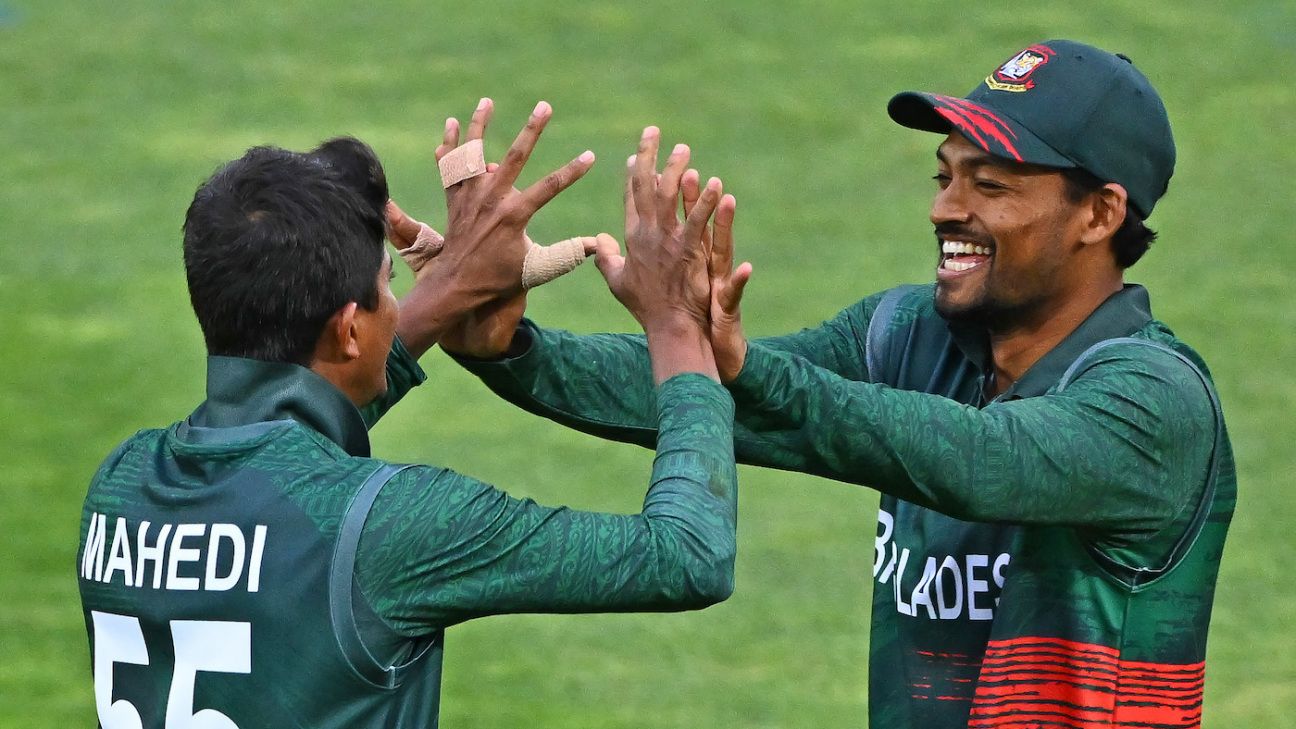“The attitude of the players, this young group had no fear. They wanted to compete in the middle,” Hathurusingha said after the third T20I. “The other thing… the leadership of Shanto. Outstanding. He was tactically spot on, and very clear with the messages with the players, what he expects from them. And I thought we did the basics longer than before.”
That response – to a question on reasons why Bangladesh had done better than, perhaps, expected – led to a question on whether a relatively younger team – without the likes of Shakib, Tamim Iqbal, Mushfiqur Rahim and Mahmudullah – worked better?
“Seniors not [being] here has nothing to do with these guys’ attitude,” Hathurusingha said. “They enjoy their cricket, and I think the environment in the dressing room is much better because the communication is very clear, as I said, from Shanto. And they know they are good enough players to compete. That’s why there’s no fear in the players’ minds.”
Shanto, just 25 and still in his early days as national captain, was below his best with the bat across the ODIs and T20Is, with the 51 not out in 42 balls in a chase of 99 in the last ODI his only contribution of substance. But he impressed with his composure as captain. So far, he has led in something of a stand-by capacity, only when the senior players haven’t been around. But could things change now?
“I think they [the Bangladesh selectors] will strongly think about that,” Hathurusingha said. “Of course, it’s a board decision, but Shanto has shown enough evidence for them to take him seriously.”
